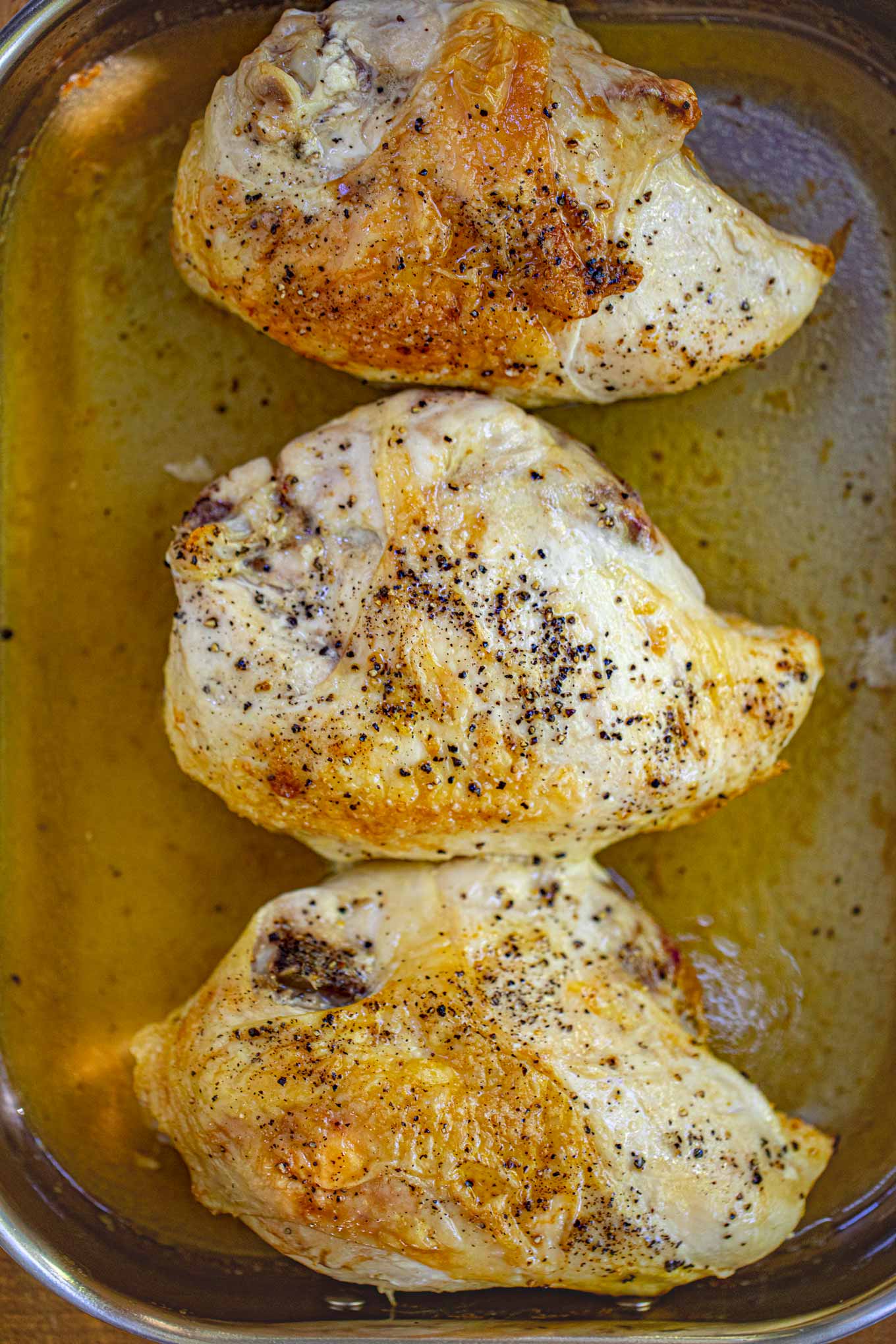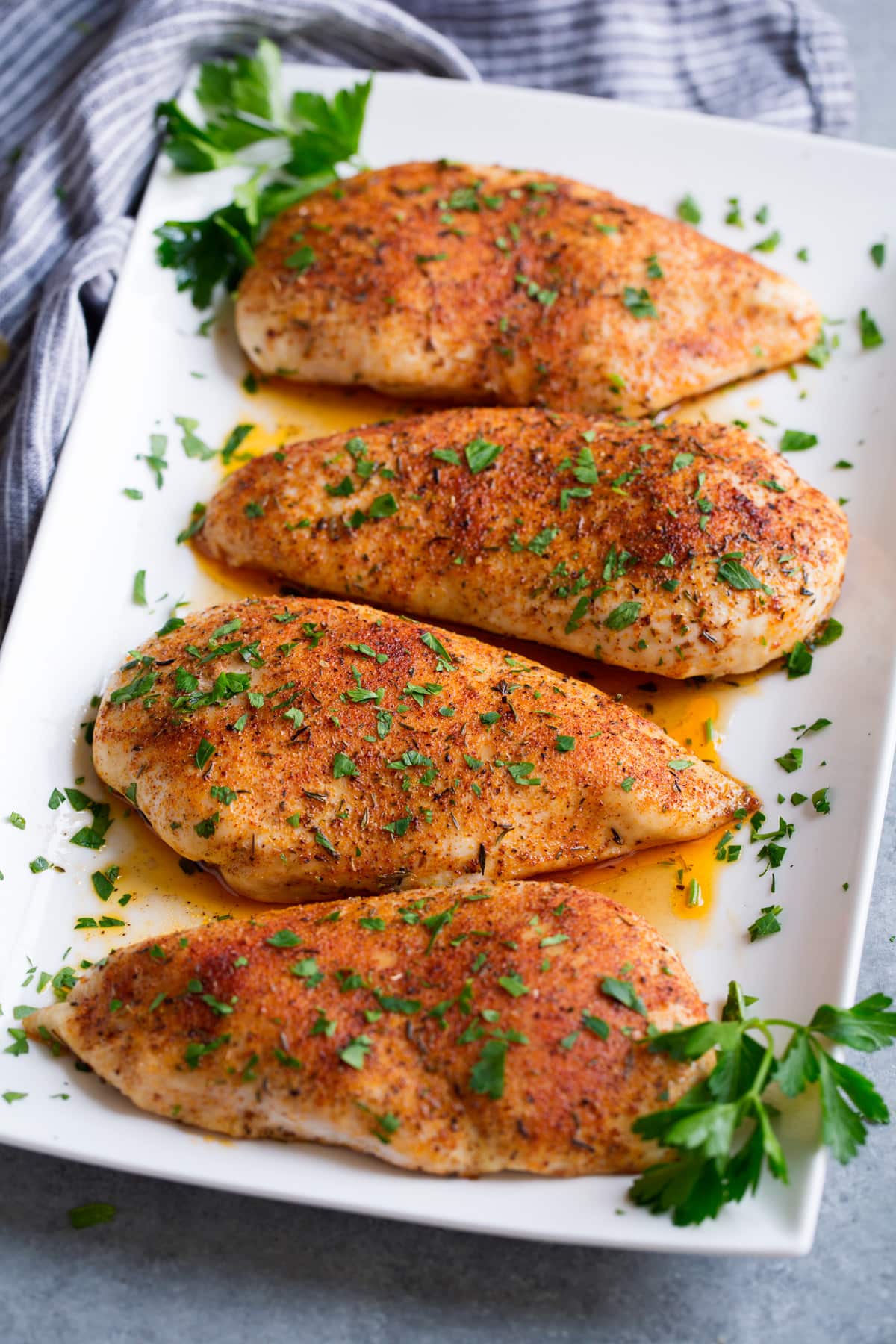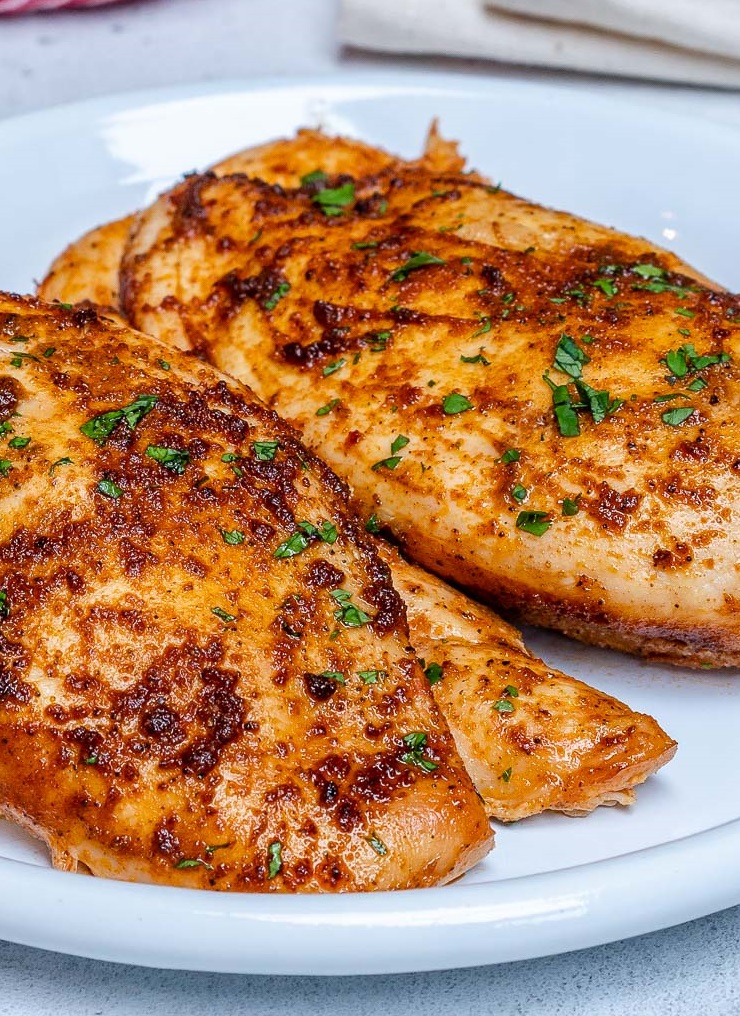

Resting the chicken breast helps ensure that the juices can be reabsorbed and the chicken breast is moist and delicious! Then pour the marinade over the chicken and chill for at least 30 minutes.
#OVEN CHICKEN BREAST HOW TO#

Experiment with herbs to change up the flavor! Coat the chicken breast with olive oil then rub it with your favorite seasoning blend, such as Mrs. Season the Chicken with Oil and Herbs Adding a little extra virgin olive oil also helps keep the chicken moist.Preheat oven to 450 degrees Cooking your chicken breast at a higher temperature for a shorter time period helps keep it moist.By baking for a shorter time and higher temperature your chicken will not be dry. You can help make sure it ends up moist by adjusting how long you bake chicken breasts. The problem most people have when they bake chicken breast is that it ends up dry. You can also easily play with the seasonings in this chicken breast recipe to change up the flavors. These chicken breasts are ready in just thirty minutes, making it a perfect weeknight recipe. They are a simple recipe to make, simply coat with oil, add your favorite herbs, and bake!

This recipe is perfectly seasoned with herbs and great for meal prep, chicken salad, or serve on its own with oven roasted peppers, homemade Texas toast, or make it a light meal by pairing it with delicious Hibachi Clear Soup!īaked chicken breasts are lean and protein-packed, making them the perfect base for easy weeknight meals. Your leftovers should remain safe for two to three days.Baked Chicken Breasts are such an easy recipe! Once you know how to bake chicken breast without making them dry, you'll use it all the time.

Bacteria is more likely to grow on raw meat that’s between 40˚F (4˚C) and 140˚F (60˚ C).Ĭooked chicken breasts should be refrigerated within two hours of cooking. Check the inside is cooked by poking in the end of a sharp knife the juices should run clear. Then turn over, cover and cook on the other side for 7-8 minutes or until cooked through. The USDA suggests you always thaw frozen chicken in the refrigerator, microwave, or a sealed bag submerged in cold water.Ĭhicken should always be cooked immediately after thawing. Heat the oil in a frying pan then add the chicken breasts (skin-side down, if they have skin) and cook for 2-3 minutes or until browned. Preparation and storage are also important. Use paper towels so they can be thrown away after picking up possible contaminants. Wash and thoroughly disinfect surfaces that come into contact with raw poultry. These bacteria can be transferred from surface to surface and end up in your salad, on your fork, and ultimately in your mouth. When raw poultry comes in contact with work surfaces, knives, and even your hands, it can leave behind bacteria. Similarly, white meat doesn’t necessarily mean all bacteria has been killed.īe cautious about cross-contamination if you’re cutting into your chicken to check its appearance. Pink meat doesn’t necessarily mean it’s undercooked. Don’t rely on how your chicken breast looks to determine if it’s ready.


 0 kommentar(er)
0 kommentar(er)
